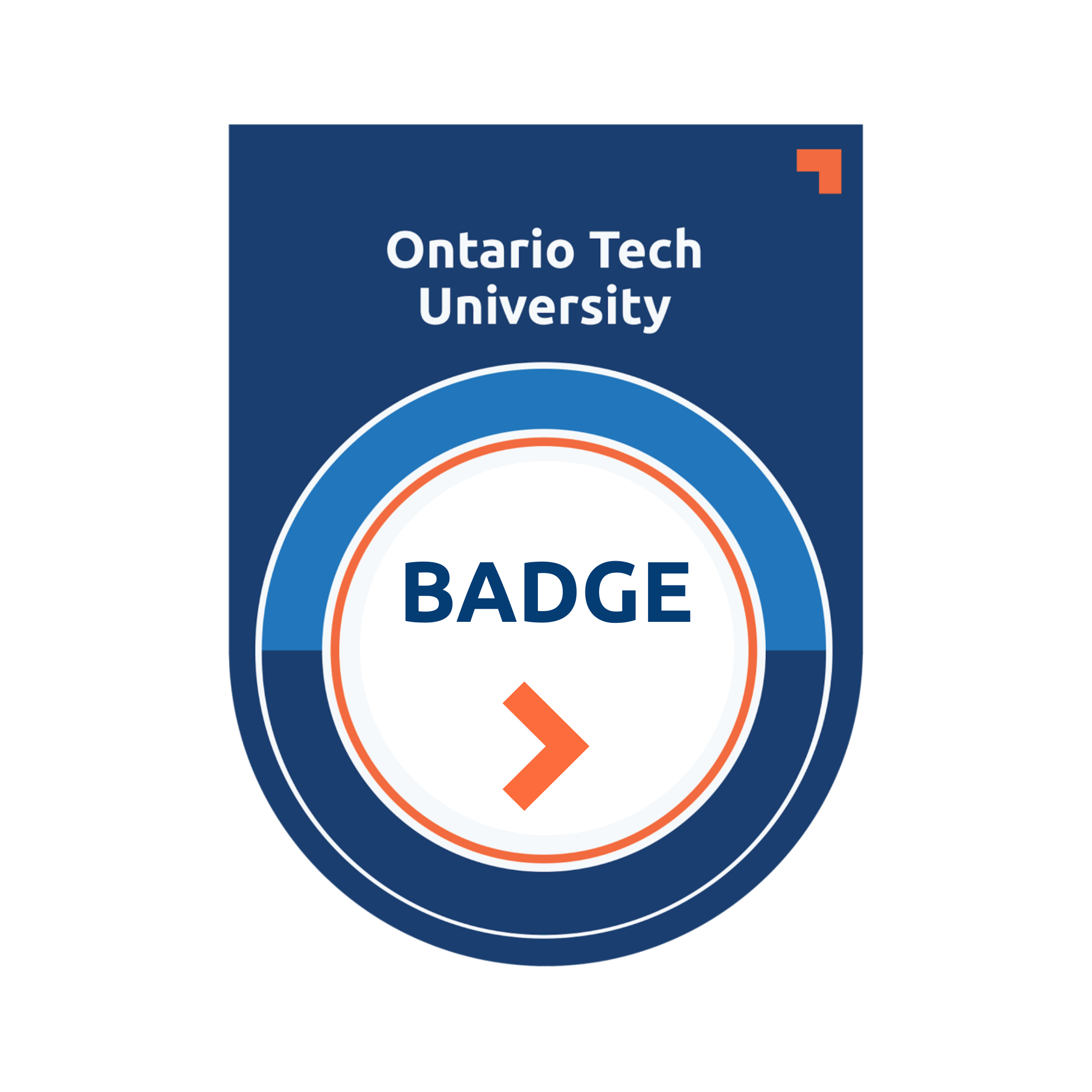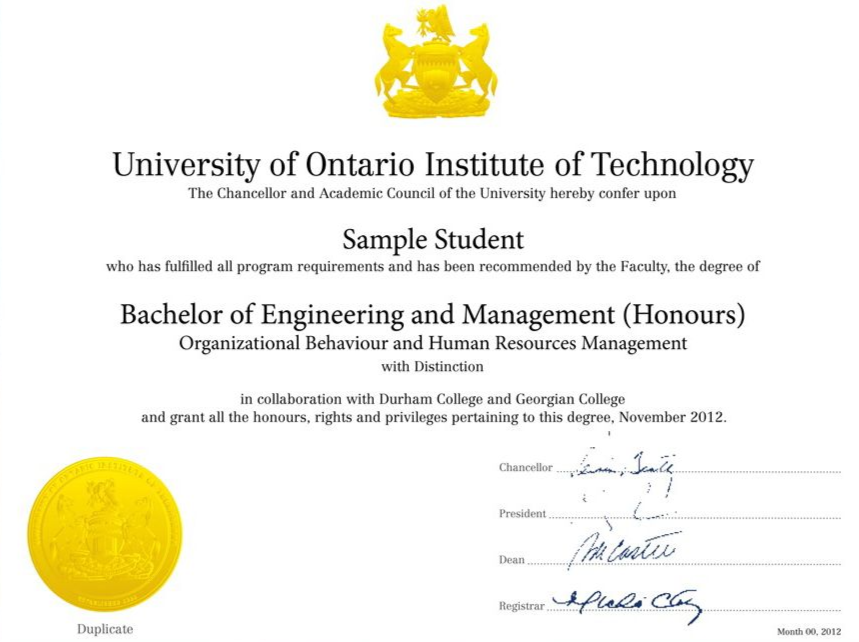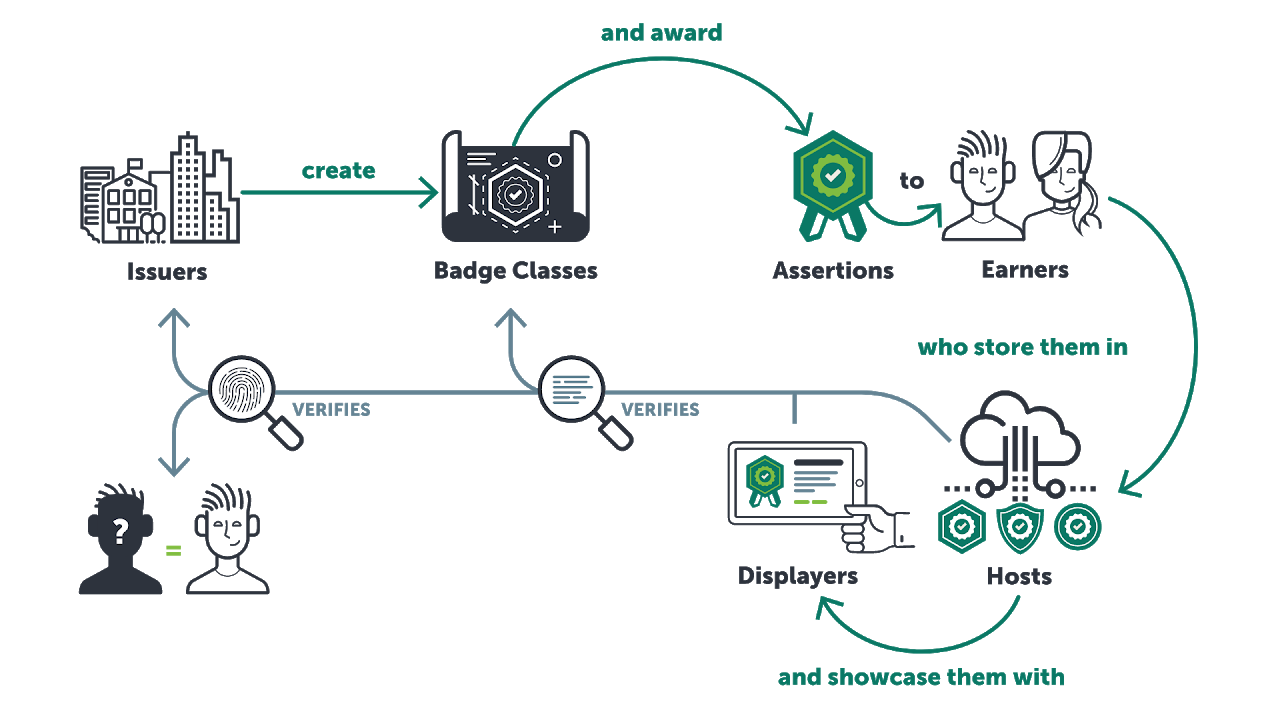Digital Badges and Microcredentials

Price: Various
Summary: Digital representations of achievement and skill in specific areas; used to supplement resumes and degrees
Overview
Educational representations of achievement and skill are adapting from artifacts such as cloth badges and certification printed on paper in a digital world. Technology, and game-ful design, afford Open Badges and Micro credentials to impact praxis, administration and curriculum design.
Badges
Badges are a part of our daily lives. We see them on backpacks, uniforms, lanyards, and in loyalty or rewards apps representing affiliation, achievement, ideas and experiences (Cambridge, n.d.). In a formal setting, a badge can be a visual or tactile representation of a credential, which is considered a testimonial of ability, experience and skill (Merriam-Webster, n.d.). For many of us, our first experience occurs in primary education with badges and credentials occurs in education with shining sticky stars and diplomas, used to signal that we can play by, or even against, the rules (Botturi & Loh, 2009).

As life progresses the artifacts distinguish accomplishment, rank or rating, qualification, and identification (Beattie, 2001; Gallagher, 2019; Statcan, 2019; Storey, 2010). And, in a less formal setting, we want to acquire badges in our spare time in digital games (Entertainment Software Association of Canada, 2018).
Gameful Design
Games have been a part of our lives throughout history as a mode of human experience where fun and emulation support insight into experiences (Botturi & Loh, 2009). It should be no surprise then that games are used in education to support content that may otherwise be disengaging (Botturi & Loh, 2009). With the advent and implementation of technology in most aspects of life, game attributes have been embraced in education through serious games and gamification (Botturi & Loh, 2009; Landers, 2015). As a reward attribute, badges are used to engage extrinsic motivation through eLearning, but as with other game attributes, they should support autonomy and real-life engagement (Becker & Nicholson, 2016; Landers, 2015). Badges need to level-up as it were, and they have. Digital Badges and Micro credentials transform game characteristics into tools that impact administration, curriculum design, professional development and teaching praxis.
Digital Badges & Microcredentials
As challenges to certification authenticity increase (Barabas & Schmidt, 2016), badges can adapt to become more dynamic and resilient structures. A Digital Badge’s fundamental DNA, or metadata, is augmented with information about achievements and skills (Choi et al., 2019; Hope, 2019). Circumstantially, Digital Badges are also known as Open Badges and can be combined to form a formidable digital tool: the Micro credential. The resulting structure of achievement and skills indicates a specialization or certification (Horton, 2020; Radford, 2019), such as Humber College’s Revit Digital Badges Continuing Education Program and EdX’s MicroMasters (Amado-Salvatierra, 2018; Humber, 2020).
While some Digital Badges or Micro credentials are static, others are securely embedded with information through the decentralized record-keeping systems of blockchain technology (Choi et al., 2019; Hope, 2019). The resulting artifacts afford the attained the ability to share achievements in a concise, substantiated method with potential employers and peers.

Critique and Implications for Education
Benefits
As higher education students enter the workforce, their degrees are still needed but don’t make them stand out (BasuMallick, 2019; Collins, 2020; Gallagher, 2019; Laverie et al., 2020). To adapt to a changing job market, as well as the introduction of AI into job screening, students exiting formal learning will need to be agile and convey their skills effectively (Gallagher, 2019; Hickey & Chartrand, 2020; Jenkins, 2020; Laverie et al., 2020; Maxwell & Gallagher, 2020). Digital badges and Micro credentials can support success through the deployment and easy integration of digital resumes/CVs and digital backpacks (Collins, 2020; Hickey & Chartrand, 2020; Hope, 2019; Gallagher, 2019). The process of asserting skills within higher education has been called unbundling (van der Zwaan, 2019), and institutions along with their educators must be aware of the process of governing and implementing Digital Badges and Micro credentials (Gauthier, 2020; Hickey & Chartrand, 2020; Hunt et al., 2020; Maxwell & Gallagher, 2020). Higher educations administrators will need to engage both internal and external resources to ensure efficacy in targeted skills, maintenance, and integration (Hunt et al., 2020; Phelan & Glackin, 2020). Also, institutional guidelines will need to be in place to ensure that represented skills accurately convey learning outcomes (Phelan & Glackin, 2020). An effective approach for technology diffusion should occur through an operational committee of key players (Miller & Homol, 2016).
Challenges
The use of Micro credentials is not without criticism. Current information indicates that Micro credentials on their own have a low completion rate (Burke, 2020). By directing efforts towards a learner’s employment readiness, higher education may be perceived as subservient to the whims of corporations and employers (Ralston, 2020). Also, it is important that regulating bodies can support the ethical maintenance of Digital Badges and Micro credentials to minimize fraudulent offerings (Phelan & Glackin, 2020).
Access and Cost
Pricing to develop and deploy Digital Badges and Micro credentials scale based on information density and deployment. Conceptually, the artifacts can be generated for free through art programs and exported or the entire process can be conceptualized through a platform such as Accredible, Badgr, Credly, or Parchment. A more complex Digital Badge and full Micro credential can follow the same operational process with an entry cost of USD$1000/year and scale up depending on the number of credentials and the level of encrypted data (Accredible, n.d.; Concentric Sky, n.d.). People can share their artifacts through free or low-cost resources like digital hubs known as backpacks, LinkedIn, and through digital resumes (BasuMallick, 2019; Choi et al., 2019; Clements et al., 2019).
About the Author

Chris Craig
References
Accredible. (n.d.). Grow your programs with the badging & certification that suit your needs. Retrieved October 9, 2020 from https://www.accredible.com/pricing/
Amado-Salvatierra, H. R., Rizzardini, R. H., & Chan, M. M. (2018). Unbundling higher education with internationalization. Experiences from two hybrid postgraduate degrees using MOOCs. 2018 Learning With MOOCS (LWMOOCS), Madrid, 9-12. https://doi.org/10.1109/LWMOOCS.2018.8534684
Badgr. (n.d.). Features and pricing: Create your pathway to success with Badgr. Retrieved October 9, 2020 from https://info.badgr.com/features-and-pricing.html
Barabas, C., & Schmidt, P. (2016). Transforming chaos into clarity: The promises and challenges of digital credentialing. The Roosevelt Institute. https://www.luminafoundation.org/wp-content/uploads/2017/08/the-promises-and-challenges-of-digital-credentialing.pdf
BasuMallick, C. (2019, March 05). The resume is dying: Here’s what the future of hiring looks like. HR Technologist. https://www.hrtechnologist.com/articles/recruitment-onboarding/the-resume-is-dying-heres-what-the-future-of-hiring-looks-like/
Beattie, J. M. (2001). Policing and punishment in London 1660-1750: Urban crime and the limits of terror. Oxford University Press.
Becker, K., & Nicholson, S. (2016) Gamification in the classroom: Old wine in new badges. In K. Schrier (Ed.) Learning, Education and Games Vol. 2: Bringing Games into Educational Contexts (pp. 61-85). ETC Press. https://press.etc.cmu.edu/index.php/product/learning-education-and-games-volume-two-bringing-games-into-educational-contexts/
Botturi, L., & Loh, C.S. (2009) Once Upon a Game. In C. Miller (Ed.) Games: Purpose and potential in education. Springer. https://doi.org/10.1007/978-0-387-09775-6_1
Burke, L. (2019, November 20). Who’s Completing Microcredentials?. Inside Higher Ed. https://www.insidehighered.com/digital-learning/article/2019/11/20/new-report-offers-analysis-microcredential-completers
Cambridge. (n.d.). Badge. In Cambridge.org dictionary. Retrieved October 9, 2020 from https://dictionary.cambridge.org/dictionary/english/badge
Choi, M., Kiran, S. R., Oh, S., & Kwon, O. (2019). Blockchain-based badge award with existence proof. Applied Sciences, 9(12), 2473. https://doi.org/10.3390/app9122473
Clements, K., West, R. E., & Hunsaker, E. (2020). Getting started with open badges and open microcredentials. International Review of Research in Open and Distributed Learning, 21(1), 154-172. https://doi.org/10.19173/irrodl.v21i1.4529
Collins, B. (2020). Go Micro: Microcredentials show employers you have the skills they seek. Talent Development Magazine, 74(6), 50. https://www.td.org/magazines/td-magazine/go-micro
Concentric Sky. (n.d.). Badgr. Edu App Center.
Credly. (n.d.). Credly’s Acclaim platform. Retrieved October 9, 2020 from https://info.credly.com/how-credly-works
Entertainment Software Association of Canada. (2018). Essential facts about the Canadian video game industry. http://theesa.ca/wp-content/uploads/2018/10/ESAC18_BookletEN.pdf
Gallagher, S. (2019, September 20). How the value of educational credentials is and isn’t changing. Harvard Business Review. https://hbr.org/2019/09/how-the-value-of-educational-credentials-is-and-isnt-changing
Gauthier, T. (2020). The value of Microcredentials: The employer’s perspective. The Journal of Competency-Based Education, 5(2). https://doi.org/10.1002/cbe2.1209
Hickey, D. T., & Chartrand, G. T. (2020). Recognizing competencies vs. completion vs. participation: Ideal roles for web-enabled digital badges. Education and Information Technologies, 25(2), 943-956. https://doi.org/10.1007/s10639-019-10000-w
Humber College. (2020). Humber REVIT Digital Badges. https://appliedtechnology.humber.ca/future-students/explore/continuing-education/micro-credentials/revit.html
Hope, J. (2019). Give students ownership of credentials with blockchain technology. Enrollment Management Report, 23(2), 6-7. https://doi.org/10.1002/emt.30533
Horton, A.P. (2020, February 17). Could micro-credentials compete with traditional degrees?. BBC: Worklife. https://www.bbc.com/worklife/article/20200212-could-micro-credentials-compete-with-traditional-degrees
Hunt, T., Carter, R., Yang, S., Zhang, L., & Williams, M. (2020). Navigating the use of Microcredentials. Journal of Special Education Technology. https://doi.org/10.1177/0162643420933568
Jenkins, R. (2020, January 13). How resumes will be used in the future: How hiring managers can retain employees and candidates find jobs in the future using artificial intelligence. Inc.com. https://www.inc.com/ryan-jenkins/how-resumes-will-be-utilized-in-future.html
Landers, R. N. (2015). Developing a theory of gamified learning: Linking serious games and gamification of learning. Simulation & Gaming, 45(6), 752-768. https://doi.org/10.1177%2F1046878114563660
Laverie, D., Humphrey, W., Manis, K. T., & Freberg, K. (2020). The digital era has changed marketing: A guide to using industry certifications and exploration of student perceptions of effectiveness. Marketing Education Review, 30(1), 57-80. https://doi.org/10.1080/10528008.2020.1716806
Maxwell, N., & Gallagher, S. (2020). Drivers for change in higher education. New Directions for Community Colleges, 2020(189), 9-22. https://doi.org/10.1002/cc.20394
Merriam-Webster. (n.d.). Credential. In Merriam-Webster.com dictionary. Retrieved October 9, 2020 from https://www.merriam-webster.com/dictionary/credential
Miller, R., & Homol, L. (2016). Building an online curriculum based on OERs: The library’s role. Journal of Library & Information Services in Distance Learning, 10(3-4), 349-359. https://doi.org/10.1080/1533290X.2016.1223957
[Ontario Tech badge]. (n.d.). Ontario Tech University. https://learninginnovation.ontariotechu.ca/microcerts-and-badges/earn.php
[Ontario Tech Diploma]. (n.d.). Ontario Tech University. https://www.bkstr.com/ontariotechstore/product/alumni/ontario-tech-university-15-in–x-18-in–florentine-degree-frame-577839-1
[Open badge system]. (n.d.). OpenBadges. https://openbadges.org/build
Phelan, S. E., & Glackin, C. E. (2020). A cautionary note on microcredentialing in entrepreneurship education. Entrepreneurship Education and Pedagogy. https://doi.org/10.1177/2515127419899599
Radford, A.J. (2019, August 12). Formalising the difference between Micro-credentials and Alternative [Digital] Credentials. LinkedIn. https://www.linkedin.com/pulse/formalising-difference-between-micro-credentials-digital-radford/
Ralston, S. J. (2020). Higher Education’s microcredentialing craze: A postdigital-Deweyan critique. Postdigital Science and Education. https://doi.org/10.1007/s42438-020-00121-8
Statcan. (2019, December 11). Registered apprenticeship training programs, 2018. https://www150.statcan.gc.ca/n1/daily-quotidien/191211/dq191211c-eng.htm
Storey, E. (2010). Canadian battlegroup badges. Canadian Military History, 19(1), 69-74. https://scholars.wlu.ca/cmh/vol19/iss1/8/
van der Zwaan, B. (2019). The challenge of change. Global Focus (Belgium), 13(2), 76-79. https://www.globalfocusmagazine.com/the-challenge-of-change/

